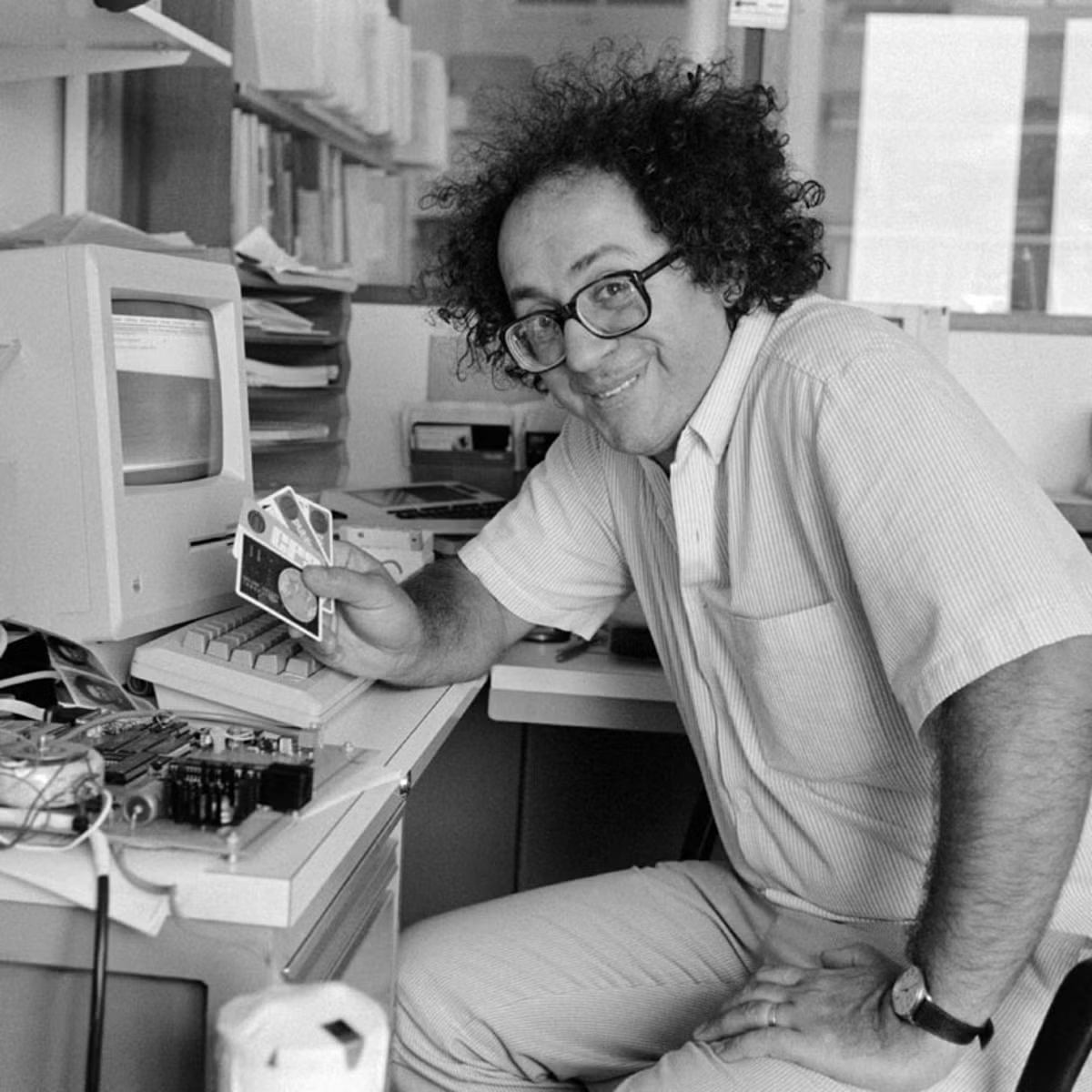Introduction
Welcome to the fascinating world of Kahoot! If you’ve ever participated in an interactive and engaging learning experience, chances are you’ve encountered Kahoot. This innovative platform has revolutionized the way educators and students interact in classrooms around the globe. Whether you’re a teacher, a student, or someone interested in the history of educational technology, this article will provide you with an in-depth exploration of Kahoot’s inception, development, and impact.
Kahoot is an online learning platform that combines elements of gamification and interactive quizzes to enhance the learning experience. It was created with the goal of making learning fun and engaging, while also promoting collaboration and active participation among students. With its user-friendly interface and captivating interactive features, Kahoot quickly gained popularity and became a go-to tool for educators seeking to make their lessons more interactive and memorable.
In this article, we will delve deep into the history of Kahoot, exploring its origins, early development, and the impact it has had on the education landscape. We will discuss the key milestones in Kahoot’s journey and how it has transformed the way teachers teach and students learn. From its humble beginnings as a creative idea to its current status as a widely-used educational platform, Kahoot has come a long way.
So, let’s embark on a journey through time to learn more about the fascinating story behind Kahoot’s creation and evolution. From its inception to its incredible impact on education, we will explore the various aspects of this game-changing platform and discover how it has transformed the learning experience for students of all ages.
History of Kahoot
Before we dive into the creation and development of Kahoot, let’s take a moment to explore its historical background. The story of Kahoot begins in Norway, where its co-founders, Johan Brand, Jamie Brooker, and Morten Versvik, sought to create an interactive learning platform that would revolutionize education.
Kahoot was officially founded in 2013, but its origins can be traced back to a project called “Lær Kidsa Koding” (Teach Kids to Code), which aimed to promote coding literacy among Norwegian children. The team recognized the power of gamification and interactive technologies in engaging young minds, and they decided to leverage these concepts to develop a broader learning platform.
The founders of Kahoot shared a vision to create a platform that would foster a creative and collaborative learning environment. They believed that education should be fun, interactive, and accessible to all. With this mission in mind, they set out to develop a game-based learning platform that would captivate students’ attention and ignite their enthusiasm for learning.
The initial concept of Kahoot was centered around the idea of using quizzes and interactive games to facilitate learning. The team believed that by incorporating game-based elements such as competition and rewards, they could make learning more engaging and enjoyable for students.
After months of development and fine-tuning, Kahoot was officially launched to the public in August 2013. From the very beginning, it garnered positive feedback from both students and teachers, who praised its user-friendly interface and dynamic learning experience. The platform gained traction not only in Norway but also internationally, quickly becoming a popular tool in classrooms around the world.
Over the years, Kahoot continued to evolve and improve its features based on user feedback and emerging educational trends. Today, it offers a wide range of interactive activities, including quizzes, surveys, discussions, and challenges. With millions of users, Kahoot has undoubtedly made a significant impact on the field of education.
Now that we have a brief understanding of Kahoot’s history, let’s dive deeper into the creation and the initial release of this groundbreaking platform.
The Creation of Kahoot
The creation of Kahoot can be attributed to the collaborative efforts of three individuals: Johan Brand, Jamie Brooker, and Morten Versvik. Their shared vision and passion for education laid the foundation for this innovative learning platform.
The concept of Kahoot originated from the team’s desire to make learning more engaging and interactive, particularly for younger students. They recognized that traditional methods of teaching often failed to capture students’ attention and enthusiasm. With this in mind, they set out to create a platform that would combine education and entertainment in a unique and captivating way.
Brand, Brooker, and Versvik were inspired by the concept of gamification, which involves incorporating game elements into non-gaming contexts. They believed that by gamifying the learning process, they could foster a more dynamic and immersive educational experience.
The trio’s journey began with the “Lær Kidsa Koding” project, where they explored the potential of using coding as a means to engage and empower young learners. However, they soon realized that the idea could be expanded beyond coding alone. They conceived the idea of creating a broader game-based learning platform that would encompass various subjects and age groups.
With their combined skills and expertise in digital media, design, and education, Brand, Brooker, and Versvik embarked on the development of what would eventually become Kahoot. Their aim was to create a platform that would not only provide educational content but also empower teachers to create their own interactive content and customize learning experiences based on their students’ needs.
The design process of Kahoot involved extensive research and testing to ensure optimal user experience and engagement. The team collaborated closely with educators and students to gather feedback and refine their ideas. Through this iterative process, they were able to fine-tune the platform to meet the needs of both teachers and learners.
Finally, in August 2013, Kahoot was officially launched, marking the realization of the team’s vision. The platform had a simple and intuitive interface, making it accessible to users of all ages and technical abilities. Its key features included interactive quizzes, real-time feedback, and a leaderboard that added an element of competition to the learning process.
The creation of Kahoot was driven by the team’s belief in the power of interactive learning and their dedication to making education more engaging and enjoyable for students worldwide. In the next section, we will explore the initial release of Kahoot and how it quickly gained popularity in educational settings.
The Initial Release
When Kahoot was initially released in August 2013, it quickly captured the attention of educators and students alike. Its unique approach to learning, combining gamification and interactive quizzes, made it stand out in the educational technology landscape.
Kahoot’s user-friendly interface and accessibility played a crucial role in its rapid adoption. Teachers could easily create and customize quizzes, while students could participate using their own devices, such as smartphones, tablets, or computers. This flexibility allowed for seamless integration into classroom environments, transforming traditional teaching methods into dynamic and engaging experiences.
One of the key features that set Kahoot apart was its real-time feedback system. As students answered questions, they received immediate feedback on their performance, enhancing their understanding and promoting active learning. Additionally, the inclusion of a leaderboard added an element of friendly competition, motivating students to strive for the top spot.
Word of mouth quickly spread, and teachers from various subject areas started incorporating Kahoot into their lessons. The platform’s ability to make learning interactive and fun resonated with both teachers and students, making it a valuable tool in classrooms worldwide.
Shortly after its release, Kahoot gained recognition through awards and accolades, further solidifying its status as a game-changer in the field of education. It was widely praised not only for its innovative design but also for its effectiveness in improving student engagement and knowledge retention.
The initial release of Kahoot paved the way for its rapid growth and expansion. The platform continued to gain popularity, with millions of educators and students embracing its interactive learning approach. As its user base grew, Kahoot implemented new features and updates to enhance the overall learning experience, ensuring that it remained relevant and effective in an ever-evolving educational landscape.
Now that we understand how Kahoot made its debut in the education sector, we will explore how its popularity skyrocketed, ultimately impacting the way educators approach teaching and students experience learning.
Rise in Popularity
Following its initial release, Kahoot experienced an unprecedented rise in popularity within the education community. Teachers and students alike embraced the platform’s unique approach to learning, transforming traditional classrooms into dynamic and engaging environments.
One of the main reasons behind Kahoot’s rapid ascent was its ability to make learning fun and enjoyable. By incorporating game elements such as competition, rewards, and a sense of achievement, Kahoot tapped into students’ natural inclination for play and turned it into a powerful tool for educational engagement.
Kahoot’s interactive quizzes and activities provided an opportunity for students to actively participate in their own learning process. Rather than passively absorbing information, students became active contributors, answering questions, competing against peers, and immediately receiving feedback on their performance. This hands-on approach fostered a deeper level of understanding and improved knowledge retention.
In addition to its engaging nature, Kahoot also offered a valuable assessment tool for teachers. The platform provided teachers with real-time data on student performance, allowing them to gauge students’ understanding of the material and identify areas that required additional attention. This data-driven approach to assessment empowered teachers to tailor their instruction to better meet the needs of their students.
As news of Kahoot’s effectiveness spread, teachers began sharing their success stories with colleagues, sparking a viral adoption of the platform in classrooms worldwide. Social media platforms also played a significant role in Kahoot’s popularity as teachers shared their experiences and created and exchanged quizzes with each other.
Recognizing the power of collaboration, Kahoot introduced the ability to share and access quizzes created by other educators through a public database known as the Kahoot! Community. This feature allowed teachers to leverage the collective wisdom of their peers and save time in creating their own quizzes, further contributing to the platform’s popularity.
Moreover, Kahoot’s versatility in accommodating various subject areas and age groups contributed to its widespread adoption. Whether teaching math, science, history, or foreign languages, educators found ways to incorporate Kahoot into their lessons, making learning enjoyable and effective across a wide array of subjects.
The rise in popularity of Kahoot was not limited to traditional classrooms. The platform gained recognition as a tool for corporate training, team-building, and even social gatherings, expanding its reach beyond educational institutions.
Overall, the rise in popularity of Kahoot can be attributed to its ability to create an interactive and personalized learning experience, its ease of use, and the sense of excitement it brought to the classroom. As Kahoot’s user base continued to grow, its impact on the field of education became undeniable.
Kahoot’s Impact on Education
Kahoot has made a significant impact on the field of education since its inception. Its unique blend of gamification and interactive learning has transformed traditional teaching methods, empowering educators and enhancing student engagement and achievement.
One of the key impacts of Kahoot in education is the promotion of active learning. By turning learning into a game-like experience, Kahoot encourages students to participate actively in their own education. This active engagement leads to improved motivation, knowledge retention, and a deeper understanding of the subject matter.
Kahoot also fosters a sense of collaboration and teamwork in the classroom. Through its multiplayer mode, students can work together to answer questions and achieve a common goal. This cooperative learning environment cultivates essential skills such as communication, problem-solving, and critical thinking.
Beyond its impact on students, Kahoot has revolutionized the role of teachers in the classroom. The platform provides valuable insights into student performance, allowing teachers to assess understanding, identify areas for improvement, and make data-driven instructional decisions. Teachers can easily create customized quizzes and surveys tailored to their curriculum, ensuring that learning objectives are met effectively.
Kahoot’s impact extends beyond the physical classroom. It has become a valuable tool for remote learning and distance education, especially in recent times. With its cloud-based platform, students can engage in interactive learning from anywhere. This versatility has been crucial in maintaining educational continuity during challenging circumstances.
The platform has also had a positive effect on student motivation. By incorporating game elements such as points, leaderboards, and rewards, Kahoot incentivizes learning and creates a sense of achievement. This intrinsic motivation keeps students actively involved and eager to learn.
Furthermore, Kahoot has opened up opportunities for inclusive learning. Its accessibility features cater to diverse student needs, including those with visual or hearing impairments. With the ability to incorporate images, videos, and audio into quizzes, Kahoot provides a multi-sensory learning experience that accommodates different learning styles.
Kahoot has also encouraged a community of sharing and collaboration among educators. Through the Kahoot! Community, teachers can exchange quizzes and learning resources, fostering a culture of continuous improvement and professional development. This collective knowledge-sharing has led to the creation of a vast repository of educational content that benefits educators worldwide.
Overall, Kahoot’s impact on education is undeniable. It has transformed the learning experience, creating a more interactive and engaging environment for students of all ages. By incorporating game-based elements and promoting active learning, Kahoot has revolutionized the way students learn and teachers instruct, paving the way for a brighter future in education.
Conclusion
Kahoot has undoubtedly left a lasting impact on education. From its humble beginnings as an innovative learning platform to its global popularity and widespread adoption, Kahoot has transformed the way educators interact with students and how students engage with their learning materials.
With its gamified and interactive approach, Kahoot has successfully made learning fun and engaging for students of all ages. By incorporating game elements such as competition, rewards, and immediate feedback, Kahoot motivates students to actively participate in their education, leading to improved knowledge retention and a deeper understanding of the subject matter.
Kahoot’s impact extends beyond the classroom walls. The platform has played a crucial role in promoting inclusive and accessible education, catering to diverse learning needs and abilities. Additionally, Kahoot has proven to be a valuable tool in remote learning settings, providing students with an interactive and engaging learning experience, even from the comfort of their own homes.
For educators, Kahoot has revolutionized the teaching process. With its real-time data and performance analytics, teachers can gain valuable insights into student progress, allowing for targeted instruction and personalized learning experiences. The ability to create and share quizzes with fellow educators through the Kahoot! Community has fostered a collaborative and supportive community, enabling continuous professional development and knowledge sharing.
Looking ahead, it is clear that Kahoot will continue to shape the future of education. As technology advances and education evolves, Kahoot will adapt and innovate, providing educators and students with new tools and features to enhance the learning experience even further.
In conclusion, Kahoot has redefined the educational landscape by bringing a sense of excitement, interactivity, and collaboration to the classroom. Its impact on education is evident through improved student engagement, teacher empowerment, and the fostering of a global community of educators committed to creating memorable and effective learning experiences. Kahoot has truly revolutionized the way we teach and learn, paving the way for a more engaging and inclusive future in education.

























